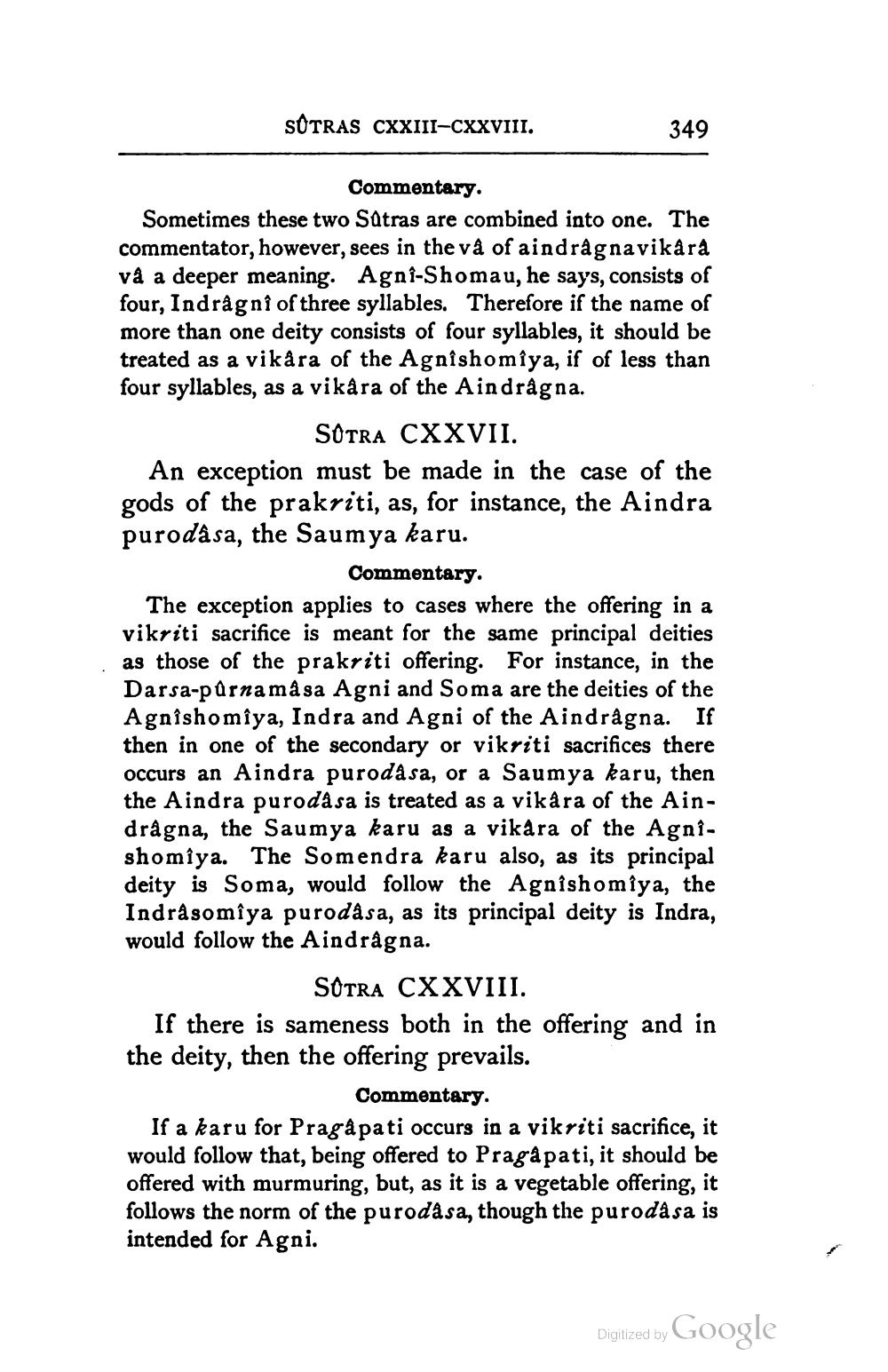________________
SOTRAS CXXIII-CXXVIII.
349
Commentary Sometimes these two Sätras are combined into one. The commentator, however, sees in the va of aindragnavikara va a deeper meaning. Agni-Shomau, he says, consists of four, Indragni of three syllables. Therefore if the name of more than one deity consists of four syllables, it should be treated as a vikåra of the Agnishomiya, if of less than four syllables, as a vikara of the Aindragna.
SOTRA CXXVII. An exception must be made in the case of the gods of the prakriti, as, for instance, the Aindra purodâ sa, the Saumya karu.
Commentary. The exception applies to cases where the offering in a vikriti sacrifice is meant for the same principal deities as those of the prakriti offering. For instance, in the Darsa-purnamå sa Agni and Soma are the deities of the Agnîshomiya, Indra and Agni of the Aindragna. If then in one of the secondary or vikriti sacrifices there occurs an Aindra purodása, or a Saumya karu, then the Aindra puroda sa is treated as a vikára of the Aindrågna, the Saumya karu as a vikara of the Agni. shomiya. The Somendra karu also, as its principal deity is Soma, would follow the Agnishomiya, the Indrasomîya purodása, as its principal deity is Indra, would follow the Aindragna.
SOTRA CXXVIII. If there is sameness both in the offering and in the deity, then the offering prevails.
Commentary. If a karu for Pragàpati occurs in a vikriti sacrifice, it would follow that, being offered to Praga pati, it should be offered with murmuring, but, as it is a vegetable offering, it follows the norm of the purodása, though the puroda sa is intended for Agni.
Digitized by Google




